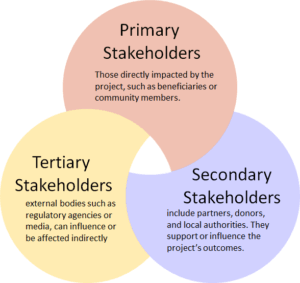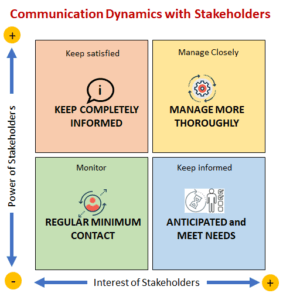 Identifying stakeholders is a crucial step for nonprofit organizations seeking to enhance their communication strategies. Stakeholders encompass a diverse group of individuals and entities that have a vested interest in the nonprofit’s mission, activities, and outcomes. This includes not only donors and volunteers, but also clients, community members, government agencies, and other nonprofits. Understanding who these stakeholders are and what they need from the organization is essential for building effective communication strategies that resonate with each group.
Identifying stakeholders is a crucial step for nonprofit organizations seeking to enhance their communication strategies. Stakeholders encompass a diverse group of individuals and entities that have a vested interest in the nonprofit’s mission, activities, and outcomes. This includes not only donors and volunteers, but also clients, community members, government agencies, and other nonprofits. Understanding who these stakeholders are and what they need from the organization is essential for building effective communication strategies that resonate with each group.
The first step in identifying stakeholders is to categorize them based on their relationship to the nonprofit. Primary stakeholders are directly impacted by the project, such as beneficiaries or community members. Communication with them should be frequent, inclusive, and participatory, often using face-to-face meetings, focus group discussions, and feedback systems to ensure they are fully engaged. Secondary stakeholders include partners, donors, and local authorities. They support or influence the project’s outcomes. Communication with them typically involves regular updates via emails, reports, workshops, and presentations to ensure alignment and shared understanding of goals.
Tertiary stakeholders are external bodies such as regulatory agencies or media, who may not be directly involved but can influence or be affected by the project indirectly. Communication can occur through public briefings, press releases, and official reports. Each category has its own unique concerns and expectations. For example, donors may prioritize financial transparency and impact reporting, while beneficiaries seek accessibility and quality of services.

By mapping out these relationships, organizations can tailor their communication efforts to address the specific interests of each group, ensuring that all voices are heard and valued.
Project team should leverage technology to enhance stakeholder identification and engagement. Digital tools such as Customer Relationship Management (CRM) systems can help track interactions and preferences, enabling organizations to personalize their communication efforts. Social media platforms also serve as valuable channels for reaching diverse stakeholder groups, providing opportunities for dialogue and feedback. By utilizing these tools effectively, nonprofits can create a more inclusive environment where all stakeholders feel valued and empowered to contribute to the organization’s mission, ultimately leading to greater impact and success.
In addition to categorizing stakeholders, nonprofits should engage in dialogue to deepen their understanding of stakeholder needs and expectations. Surveys, focus groups, and one-on-one interviews can provide valuable insights into what stakeholders perceive as the organization’s strengths and weaknesses. This feedback is instrumental in shaping communication strategies that are not only informed but also responsive to the audience’s needs.
Furthermore, it is important to recognize that stakeholders are not static. Their needs and interests may evolve over time due to changes in organizational direction, community dynamics, or external factors such as policy shifts. Regularly revisiting and updating the stakeholder map is essential for maintaining relevance in communication efforts. This ongoing assessment allows nonprofits to pivot their strategies in response to emerging trends and challenges, ensuring that they remain aligned with stakeholder expectations and maintain engagement.

